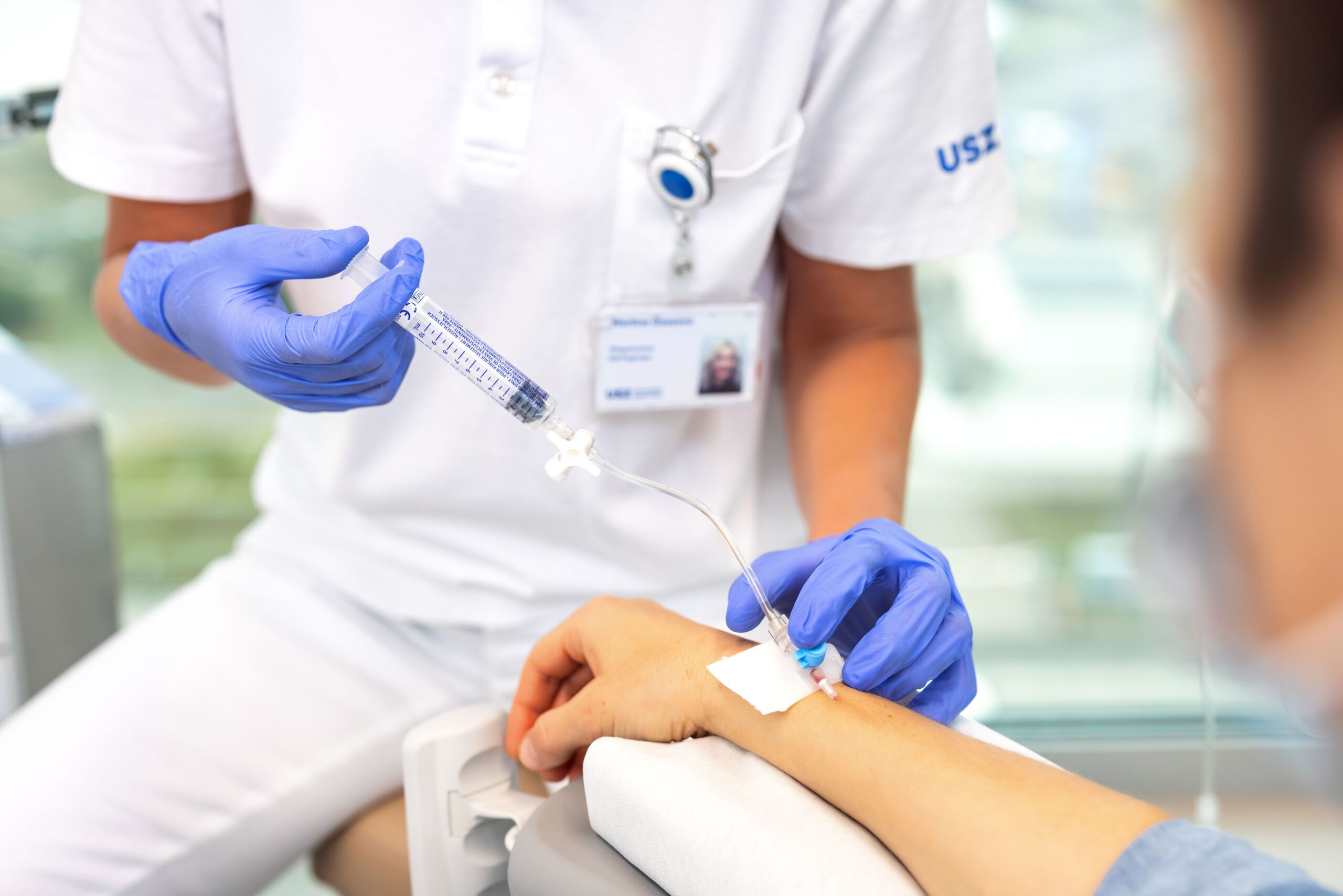Overview
So-called “thin” melanomas without offshoots can be cured with surgery in most cases. If the melanoma has already penetrated deeper into the skin or small foci of melanoma have been found in the lymph nodes, this is referred to as high-risk melanoma. Although they have not yet produced offshoots in distant organs, they do have a certain risk of doing so. If the melanoma has already spread to the organs, this is referred to as metastatic melanoma. The treatment approaches differ for these two forms.
In patients with high-risk melanomas, the tumor could be completely removed, but there is a certain risk of recurrent melanoma. The aim of therapy here is to cure patients permanently as a preventative measure. This is referred to as an adjuvant therapy approach.
In patients with organ infestation, a permanent cure can no longer be achieved in all cases. The aim is then to prevent the disease from spreading further and to maintain quality of life. However, even at this stage the disease can often be kept stable for years. This therapy principle is called palliative. The mainstays of treatment for melanoma are surgery, drug therapies and radiotherapy.
Surgery
A newly discovered melanoma must be completely removed as soon as possible. Depending on how deeply the melanoma has penetrated the skin, different safety distances are necessary. Depending on the thickness of the tumor, a sentinel lymph node biopsy is also recommended.
Medication
Drug therapy for melanoma has developed considerably in recent years. Effective medication is now available.
Immunotherapy
The principle of this new, innovative therapy is to use the drug to stimulate the patient’s own immune cells so that they can fight the cancer cells themselves. There are different active substances, which are also used in combination depending on the situation (ipilimumab, nivolumab, pembrolizumab).
These therapies can achieve a lasting treatment response in around 40% of patients.

Targeted therapy with kinase inhibitors
In this case, the drug directly attacks certain changes in the genetic material of the tumor. This prevents the tumor from multiplying further and may cause it to recede completely. The prerequisite for the use of these drugs is the presence of the specific changes in the genetic material. The tissue is first examined in a specialized laboratory. There are several approved active substances: vemurafenib/cobimetinib, dabrafenib/trametinib, encorafenib/binimetinib.
Injection with TVEC
A new type of vaccination therapy has recently become available. A specially modified herpes virus is injected directly into the tumor. The virus is modified in such a way that it leads to the direct destruction of tumor cells in the tumor as well as to the attraction of the body’s own immune cells. As a result, even distant tumor clusters that have not been treated can sometimes perish.
Treatment within the framework of clinical studies
Melanoma treatment is very dynamic and has changed considerably in recent years. Such advances are only possible through clinical studies. At the USZ we have the largest department in Switzerland for clinical research in dermato-oncology.
Chemotherapy
The principle of chemotherapy is to fight the tumor with cell toxins. Nowadays, chemotherapy is often no longer the first choice for melanoma, but there are situations in which it is still used.
Radiotherapy
Radiotherapy is well suited for certain tumors. For example, we can treat certain early stages of melanoma or superficial skin lesions in dermatology.
by means of boundary beams. In radiation oncology, higher-energy radiation is used for treatment, which can be directed specifically at parts of the melanoma that cannot be accessed surgically (e.g. bone or brain tissue). This is referred to as stereotactic radiation.
Follow-up checks
Regular follow-up checks with a dermatologist are essential in the case of melanoma in order to recognize at an early stage whether offshoots or a second melanoma have formed.
Depending on the severity of the disease, your doctor will determine the frequency of the check-ups and what additional examinations (ultrasound, X-rays and laboratory tests) are necessary.




